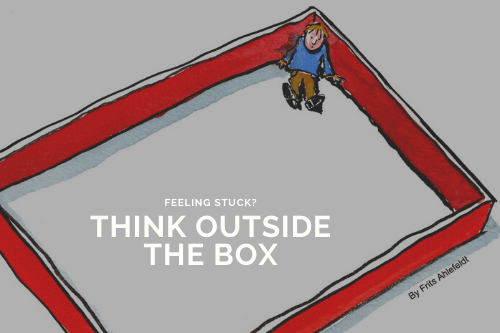
YouTube / iTunes / Spotify / Radio Public / Pocket Casts / Google Podcasts / Breaker / Overcast
Listen to ArtisanEnglish.jp posts & lesson intros here.
Idiom: Think outside the box
If you want to be successful in this world, you need to think outside the box.
This little Idiom means to think differently while being creative and using originality.
It seems simple enough, right?
Look at what everyone else is doing and then do something different.
Originality is the key to success in the vast majority of cases.
It’s easy to follow after everyone else and do the same thing they are doing.
That, however, is going to get you the same thing everyone else has.
It’s also dull, old and boring.
I’ll use ArtisanEnglish.jp students as an example here.
Almost all English language schools in Japan follow the same pattern.
You join group lessons, purchase overpriced materials, and then study grammar, situational English or language tests.
How many times have you discussed ‘shopping’ or ‘going through customs’ in a language class?
After a while, you become bored because lessons are not stimulating or challenging.
That’s why I decided to think outside the box when I created ArtisanEnglish.jp.
I realized that some students also want to think outside the box, push past their limits, and truly become smooth, fluent, and knowledgeable English speakers.
If you are a language student, you probably don’t receive the type of correction you require to improve dramatically.
You feel stuck at your current TOEIC level or that your skills are unbalanced.
ArtisanEnglish.jp addresses that by presenting you with 100% error correction and unique, up-to-date topics that change weekly and are never repeated.
By thinking outside the box and approaching English language study differently, you are challenged not only to use the skills you have but to improve them lesson by lesson.
Flesch-Kincaid Readability Test
This post is understandable by someone with at least an 8th-grade education (age 13 – 14).
On the Flesch-Kincaid reading-ease test, this post scores 62.
The higher the score on a scale of 0 – 100, the easier the passage is to read.

